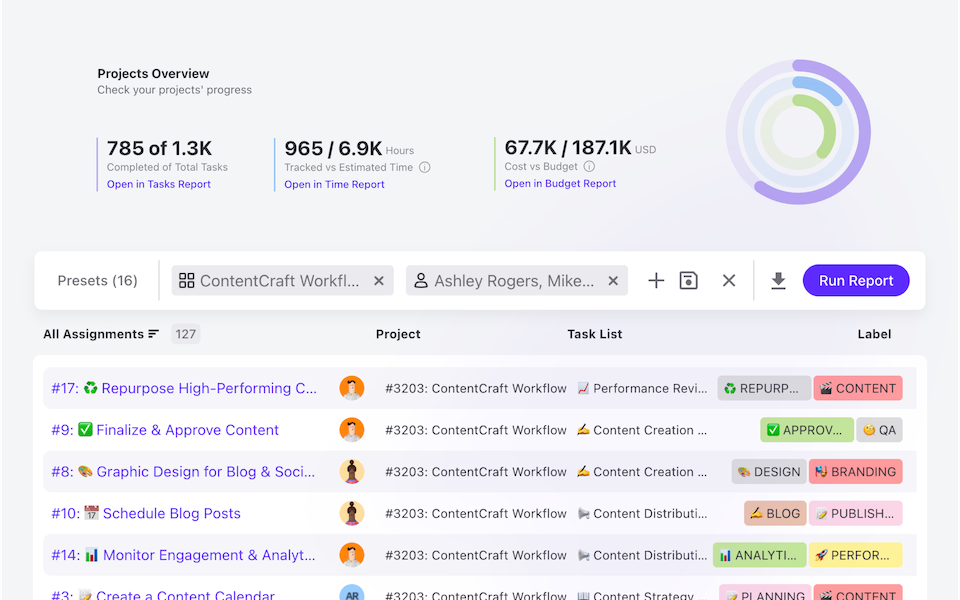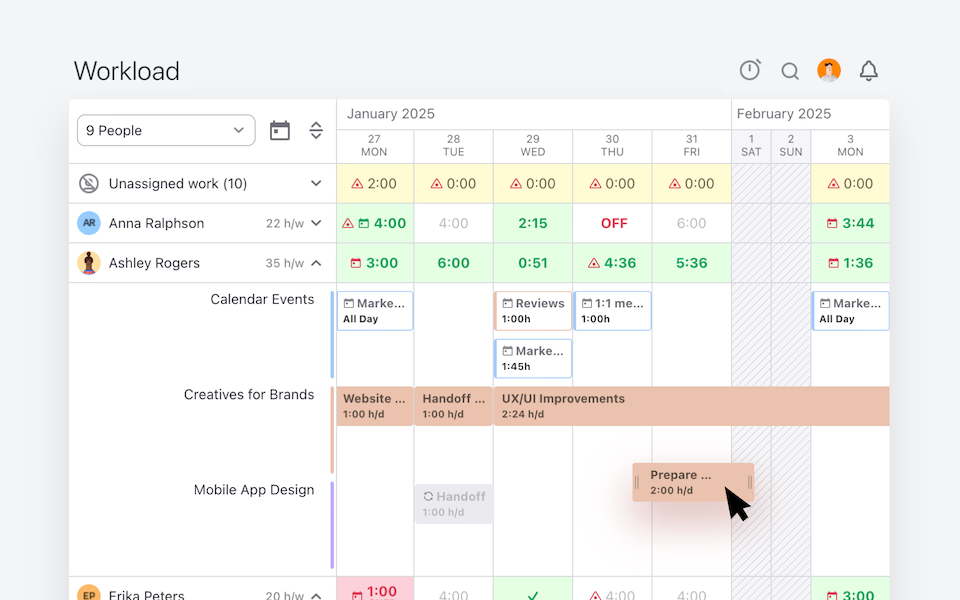Project Management Reporting
Get insights into your business profitability and team productivity – now and into the future.
Make informed decisions fast, with data at your fingertips. ActiveCollab helps you create customized project reports, workflow reports, profitability analysis, and more in seconds.

needed
Reports and Dashboards—if you can see it, you can be it
Share details with clients, keep an eye on individual and team performance, understand utilization and profitability, and plan ahead for growth.
Main Dashboard
Get an instant, clear overview of your business and ongoing activities.
Project Progress Menu
Monitor your projects’ progress at all times: open and completed tasks, tracked and estimated hours, expenses, budgets, and profitability.
Capacity Reports
Keep an eye on capacity and understand potential bottlenecks or overheads. Plan for the future workload.
Project and Task Reports
Track project progress across the organization, teams, and clients.
Budget Reports
Track Cost vs. Budget for more project budget information and ROI calculations.
Time Reports
Follow individual and team logged time per project and client for optimal capacity utilization.
"ActiveCollab helped in making the transition smooth when we were pushed toward home working and was one of the key factors in maintaining the quality of our work."
Interior Designer, Havelkadesign
"ActiveCollab sounded too good to be true. We went into our trial period with low expectations – to our surprise and delight, we were proven wrong."
Founder and Creative Director, JUICE Creative Group
"ActiveCollab allows our teams to ask questions, track and update statuses, report time, and communicate effectively and efficiently."
Director, Strategic Accounts, Xivic
"We've gotten way more efficient with our time management and communication, and a big part of that is because of ActiveCollab."
Founder and Managing Director, Rock Agency
Workload Management
Save yourself days of planning and hours of meetings. A single overview of your team’s availability, projects, and tasks through time, capacity, and workload.
↳ See how Workload View works
Invoicing with Payment Gateways
Create and send invoices directly in ActiveCollab. Sync invoices with QuickBooks and enable card payments.
Time Reports
Understand who spends time on what. What project or client is bringing in the most value? See it by running this simple report in ActiveCollab. It only takes a few clicks.
↳ See how Dashboards and Reports workSuccess and Support
50K Teams
93%
Happiness Score






